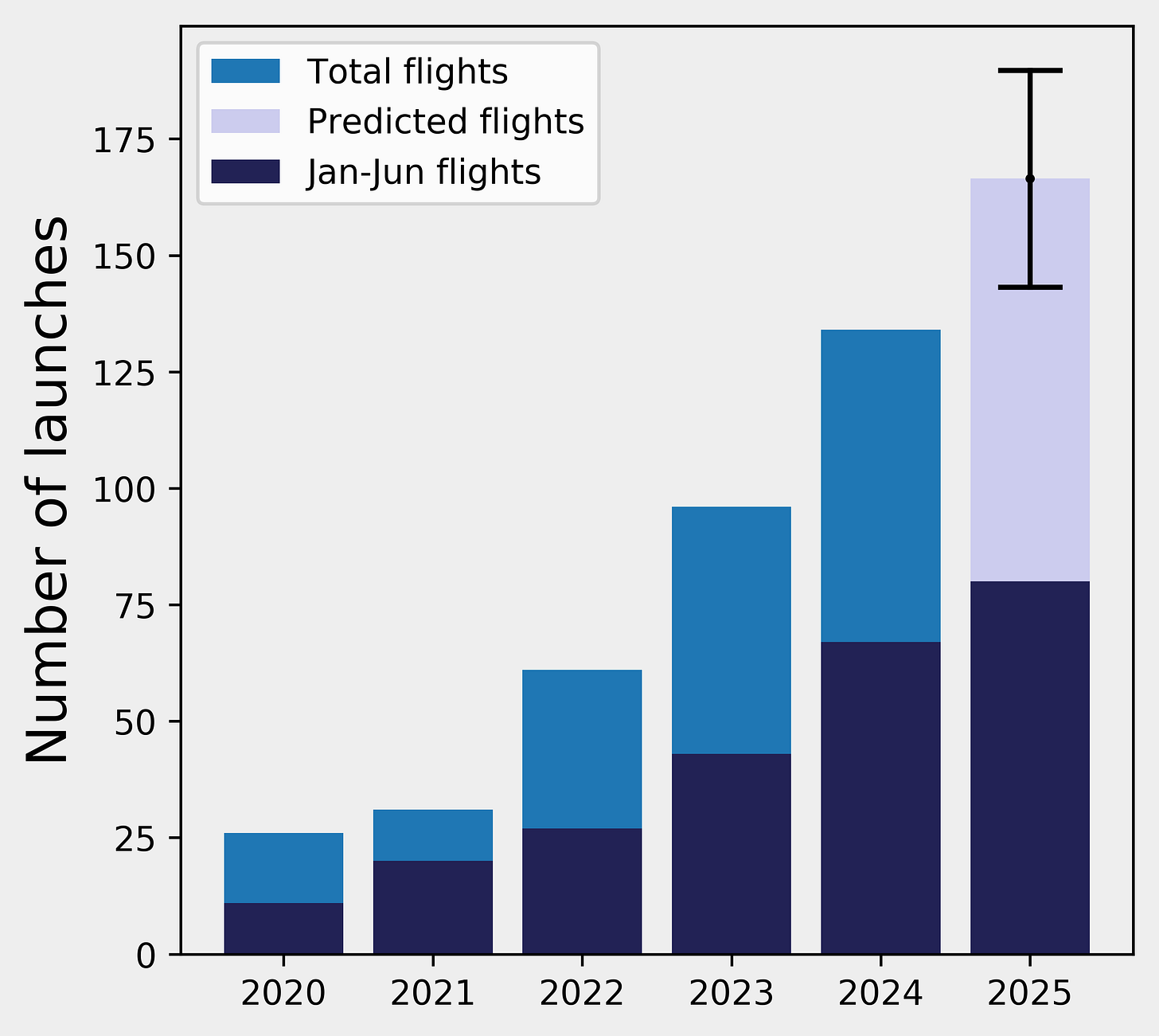Mass Value Report for July 2025
What are the levers that determine who wins the long term space race?
It goes without saying, for most people paying attention to the space sector, that SpaceX are currently the dominant player. In many areas it isn’t even close. But that is the status quo, and subject to change. Other companies and other nations are looking to compete - so is this dominance going to last? Who will be leading in space in 10, 20 years time?
I like to think ahead to the year 2100. Its a long enough timescale for radical change, but a short enough one for human concern - my kids should still be alive then. Over the course of this century we can expect a significant human expansion into space, as I’ve detailed here at length. It is interesting to speculate on the course this might take, and useful to do so in order to determine policy.
Currently, what matters is the ability to launch payloads into Earth orbit. This is where the commercial, military, and most of the scientific activity is. With my regular model of Falcon 9/Heavy performance, I’m predicting 173 payloads from these rockets this year. Figures that would have been unheard of just 5 years ago.
There is more to space than Earth orbit though, especially if we want to develop and colonise it. This causes a difficulty when looking at things like total mass launched, because mass can be launched to different locations, and in the long term the mass we use won’t all be launched from Earth. Mass is and will remain the overriding constraint on our activities, so it will remain relevant as a metric.
The way I do this is outlined in a paper I published in 2020 - introducing the concept of “mass value” for which this regular report is named. Simply put, its a way of usefully comparing payload masses to different parts of the solar system on the same scale. Whatever the particulars of how we settle space are, large increases in mass value are a necessary condition. So the capability of various players - companies, nations, etc. - in this domain can be measured by the mass value created. Today I’m discussing the five factors which can shift that value.
Space Investment
The simplest level is just spending more money. The victory of the US over the USSR in the space race was overdetermined - superior organisation, computer technology, engine design etc. - but these manifested themselves in one main factor, which was that by July 1969 the best functional Soviet rocket (Proton) could send around 4 metric tonnes to the Moon. The Saturn V could send 45 tonnes. Even considering other issues like the difference in experience with rendezvous and docking, the Moon race had to go to the side with the 10x advantage in lift capability.
Keep reading with a 7-day free trial
Subscribe to Planetocracy to keep reading this post and get 7 days of free access to the full post archives.


